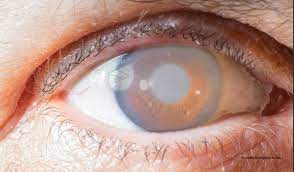Common Myths about Glaucoma
Glaucoma is one of the leading causes of blindness for people over the age of 60. It can occur at any age but is more common in older adults. In India, glaucoma is the leading cause of irreversible blindness with at least 12 million people affected and nearly 1.2 million people blind from the disease.

Glaucoma is a group of eye conditions that damage the optic nerve, the health of which is vital for good vision. In glaucoma, there is progressive and irreversible damage to the optic nerve, which is the nerve of the eye responsible for the vision and which, if untreated, can lead to blindness. This damage is often caused by abnormally high pressure in your eye.
Although it is the leading cause of blindness or vision loss worldwide, there are some myths or misconceptions about its cause and treatment. In this blog, we have listed five of them, along with the facts you need to know!
MYTH #1: Glaucoma Only Affects the Elderly
In most cases, glaucoma affects people over age 60, but it can affect anyone at any age. Several factors can put you at a higher risk of developing glaucoma, including a family history of the condition, hypertension (high blood pressure), diabetes, ocular hypertension (raised eye pressure), and myopia (short-sightedness). Schedule an eye exam every two years, if you have one or more risk factors.
MYTH #2: Glaucoma Affects Only One Eye
Typically, glaucoma occurs in both eyes. But first, the pressure can increase in one eye. The increased eye pressure can damage the optic nerve, leading to gradual vision changes. First, the peripheral (side) vision is affected, therefore, the vision changes are not apparent immediately. Over time, the central (direct) vision also begins to get affected.
MYTH #3: Glaucoma has Severe Symptoms
In the early stages, the condition has very few symptoms. These symptoms can come and go, and steadily become worse. Some of the symptoms include eye pain, hazy vision, rainbow-colored halos around bright lights. By the time these symptoms become apparent, you may have already lost some of your vision. The only key to protecting your vision is to have early detection through regular eye exams.
MYTH #4: There Is Only One Type of Glaucoma
Glaucoma is of two types: open-angle and angle-closure. The most common is open-angle, accounting for about 90% of all the cases. In this type of glaucoma, the eye pressure increases gradually over time. Whereas, in angle-closure glaucoma, the eye pressure rises suddenly and sharply. If both types are left untreated, it can lead to irreversible vision loss.
MYTH #5: Glaucoma Can be Cured
Typically, glaucoma cannot be cured. The condition is treated with oral pills or eye drops that help control the eye pressure. If these treatment options do not work, the eye doctor may recommend surgery called Trabeculectomy. Trabeculectomy is a type of glaucoma surgery performed on the eye that creates a new pathway for fluid inside the eye to be drained. This is an outpatient procedure performed in the operating room.

Conclusion
If you have glaucoma or are at risk of developing the condition, immediately seek eye care from the top eye hospital near you. Early detection of glaucoma can prevent vision loss.
Zamindar’s Microsurgical Centre has a dedicated Glaucoma clinic where screening, early detection, treatment, and systematic follow-up of glaucoma patients is done. All glaucoma patients undergo a detailed eye examination with a visual field analysis.

